Alan Pert is Director of Melbourne School of Design (MSD) at Melbourne University & Principal at NORD Architecture with offices in Glasgow, London and Melbourne. Here he reveals a short history of Melbourne, its top buildings, galleries, pubs and more.
Melbourne is the antithesis of the Bilbao effect although there are plenty of its recent buildings by local architects shouting for some attention. Unlike its New South Wales neighbour with its postcard ready Opera House image, Melbourne is a city of ‘Ten Thousand Things’. It is the archeology of smaller scale spaces that are the ballast of the city. The laneways carving through the grid of the CBD are strangely familiar to a Glaswegian but in Melbourne they are an example of what can happen with a growing population and forward thinking licensing laws. Inside the laneways there is confetti of independent retailers, galleries, cafes, restaurants, kiosks and connections to rooftop bars and basements clubs. These are pedestrian focused spaces that create a human scale to a big city and which is predicted to double its current 4m population over the next 40 years. You will find wedding shoots down graffiti laneways and a backcourt culture, which has spread out from the city to the inner suburbs although with a bit more grit. It is a pluralist’s city with a diversity of cultures, food, fashion, architecture, art and music shaping a heterogeneous landscape of things to do.
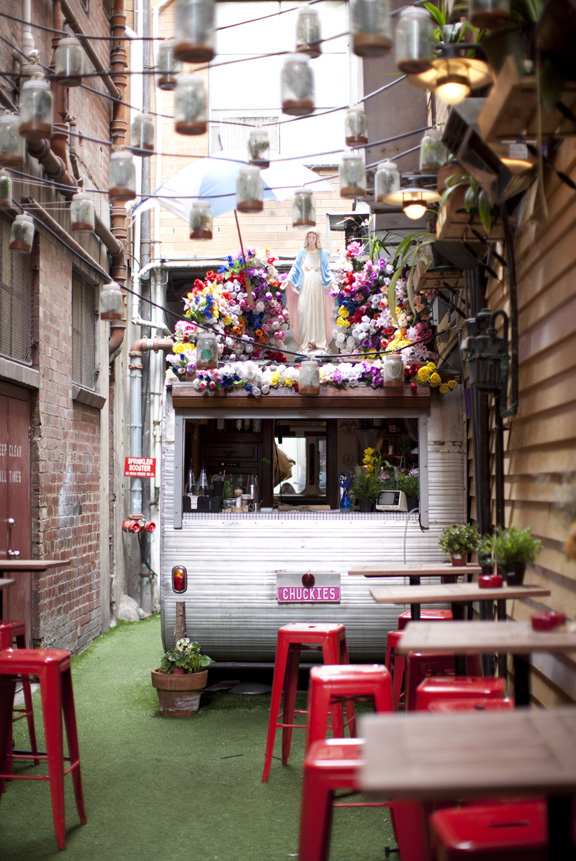
Laneway bar
Melbourne was initially dominated by British and Irish settlers up until the 1950s when the first wave of Greeks and Italians arrived en masse and pockets of the city still feel characteristically Italian or Greek. Asian migration was disallowed under the White Australia policy, which wasn’t dismantled until the 70s. The first Asian migration wave was from Vietnam, but soon others arrived from Malaysia, The Philippines, Myanmar, Laos, Cambodia, Thailand, South Korea, Singapore, Taiwan, Japan, Brunei, Hong Kong and, most recently, in very large numbers and often as students, from China. This fusion of cultures is having a unique impact on the evolving identity of the city. Common ground between East and West is where we are beginning to find a distinctive language in Melbourne whether it be with food, fashion, design or architecture. The work of the local architect Sean Godsell who has just completed the new MPavilion is an example where he has looked for an expression in his work that places him in the region, in Australia and in Asia, using devices common to both East and West. He has abandoned the corridor in most of his work, which immediately de-Westernized his plans, and developed instead his own versions of the Eastern divided plan, where space is articulated by sliding walls and doors.
The universities play a huge part in the cultural and social life of the city but unlike many other cities they are physically helping to reshape the city. RMIT University is in the heart of the city, spread across streets and laneways it has over 150 buildings that are part of the life of the city. Huge investment into this infrastructure over the last 30 years has seen a commitment to design with each new facility procured with a focus on design quality and enhancing the public realm. In other words this is not an introverted world of learning but an integrated urban campus where university and city trade off each other. The top end of Swanston Street in and around the state library of Victoria is a great place to start to explore the architecture of RMIT and the dispersed amenities for the students. Sean Godsell’s new RMIT Design Hub is the backdrop for “Predestination”, a sci-fi thriller starring Ethan Hawke and just released in Australia. There is usually an exhibition to be found in the Hub building or next door at the archive where the legacy of RMIT graduates work is being collected.
Melbourne University has typically been North of the RMIT campus. The origins of the campus are more European in its layout but it is expanding beyond its traditional boundaries to become a significant part of the North of the City with huge investment into a new sustainable technology research and development precinct around the Parkville Campus. Like the University’s biomedical precinct where biomedical scientists work with hospitals to translate research progress into useful and sometimes life saving applications – the Carlton Connect Initiative will provide a place where researchers can work with industry and Government to translate research in areas such as water, energy and urban futures. In addition, the new Melbourne School of Design opens its doors on 1 December; a building designed by local architect John Wardell in collaboration with Boston based NADAAA. The building houses the best architectural collection of books in Australia, a new digital fabrication lab on the ground floor and a major new public gallery space which will launch a curatorial programme in March 2015.
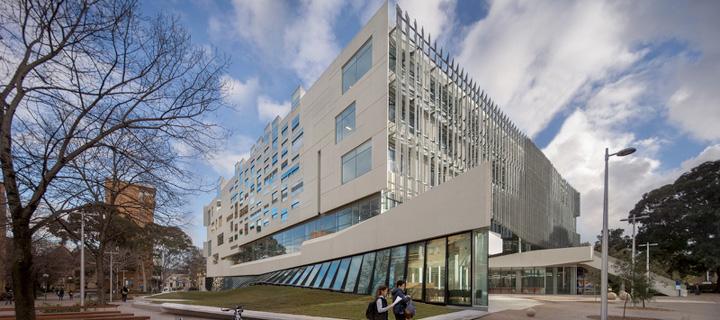
Melbourne School of Design by John Wardell and NADAAA
Melbourne University also includes the Victorian College of the Arts VCA on the Southbank of the CBD. This is part of the arts precinct which is renowned as being one of the very best in the world with on the highest concentrations of top-class venues including the Arts Centre, Melbourne Theatre Company, Australian Ballet, Hamer Hall, the National Gallery of Victoria and the Melbourne Recital Centre all located within a stone’s throw of one another. The VCA announced its expansion earlier this year as part of the Arts precinct redevelopment, which would further open the college campus to the community of the city.
Just outside of the City at the Caulfield campus of Monash University you can also find MADA (Monash University Art Design & Architecture) while in Prahran you have Swinburne University offering yet more design related courses. It is as such not difficult to see how ‘design’ has become imbedded in the cultural life of the city. Many graduates continue to live in Melbourne or work with established designers and as such the city is bursting with creative talent and work to show. With a city looking to cater for a rapidly increasing population it is obvious what role design and young designers can play in shaping the future of the city.
PLACES TO EXPLORE
The Melbourne Arts Precinct
Just South of the Yarra River (also referred to as Ngargee, which is a Bunurong word for describing “gathering for celebration”) groups together, The Arts Centre including the recently refurbished Hamer Hall, The MTC Theatre, Melbourne Recital Centre, The National Gallery of Victoria, Malthouse Theatre, The Australian Centre for Contemporary Art (ACCA) Iwaki Auditorium and Sidney Myer Music Bowl.
MPavilion
A more recent addition to the Arts Precinct portfolio is the MPavilion situated in the Queen Victoria Gardens. Conceived by its patron, Naomi Milgrom, the pavilion takes its cue from the Serpentine Pavilion in London and will host a series of curated events over the summer in Melbourne. The pavilion has been designed by Melbourne architect, Sean Godsell.
Coffee Houses
Long, short, black, white, filter, cold drip, single origin or house blend, are all part of a shared language amongst one of the world’s most culturally diverse populations. Coffee and cafés are part of the DNA of Melbourne. The quality and craft in coffee roasting, blending and serving has chased away the global brands and what remains and continues to grow is a coffee culture, which has shaped a new social infrastructure for the city. It is a culture, which has been actively encouraged and used in government policy to breathe life back into the inner city following the 1990s recession. They are a layer cake of carefully considered typography, signage, raw interiors, furniture, breakfast choices, sculpted beards and tattooed staff. In a world of homogenized streetscapes and retail offerings Melbourne’s café culture creates a unique atmosphere of originality, individuality and good taste.
There are too many to list and I would recommend browsing through www.broadsheet.com.au, which is an encyclopedia of things to do in Melbourne. Also watch out for Melbourne International Coffee Expo 13-15 March 2015.
Inner Suburbs
The inner suburbs of Fitzroy and Collingwood are also worth exploring; Gertrude Street, Brunswick Street, Johnston Street and Smith Street, connect together in a large urban promenade of small gallery spaces, local fashion designers, furniture makers, independent bookshops, 21st century furniture shops, food outlets and coffee shops.
St Kilda
St Kilda sits adjacent to the bay and is home to the cultural institution that is Luna Park, a 100-year old amusement park. You can catch a tram from the CBD and it is worth allocating a day to explore the bayside around St Kilda.
The Wilde, Fitzroy
The vibe is a bit British gastro pub but a good place to start a night out in Collingwood and Fitzroy. Complete with roast dinners, G&Ts, house-made tomato sauce and hand pumped English Ale. Plus they have a colonial themed function room called the Explorer’s Club that fits 60 people and comes with a projector and a free pool table.
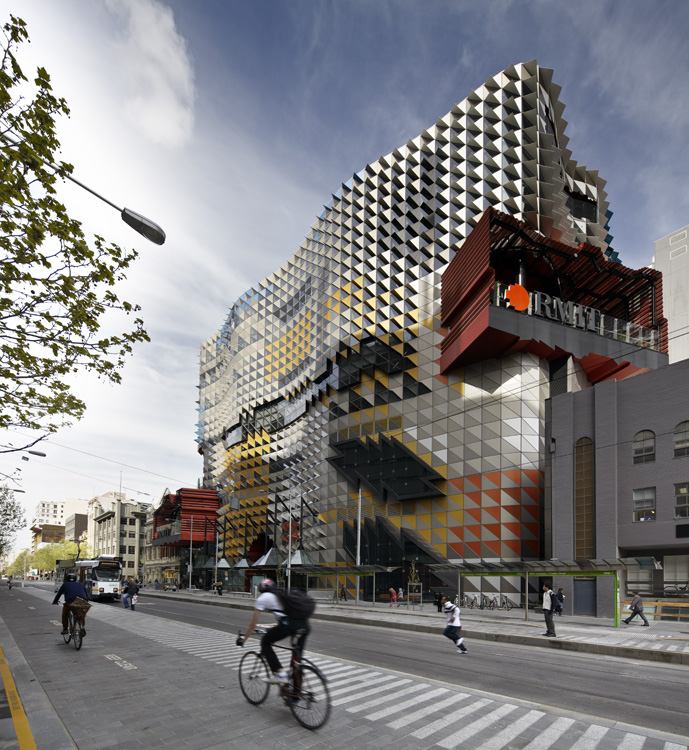
RMIT Business School by Lyons Architect | photo by Nils Koenning
Swanston Street – Architecture
Walk the length of Swanston Street, from Melbourne University at the North and the recently completed Melbourne School of Design down through the city campus of RMIT University with its new Design Hub by Sean Godsell, Business School by Lyons Architect and Building 8 by Peter Corrigan, past the state Library and the offices of the City of Melbourne and you will get a sense of the diversity of the architectural offerings.
Federation Square
At the foot of Swanston Street you will find Federation Square a somewhat controversial addition to the city when it first completed just over 10-years ago. Now the square is at the heart of the social life of the city. Federation Square hasn’t been the site of any great political event, civic turmoil or ritual like other major squares around the world but it filled a huge gap in a city that had no real gathering space for its citizens. It fulfills a unique offering – the opportunity to accommodate 15,000 people smack bang in the heart of the city.
GALLERIES / MUSEUMS
The Lyon Housemuseum
The Lyon Housemuseum is a private house and private art collection located eight kilometres east of Melbourne in the residential suburb of Kew. The Housemuseum displays selected works from the Lyon Collection of contemporary art, which includes paintings, sculpture, video work and installations by many of Australia’s leading contemporary artists. The Housemuseum and the Lyon Collection are open for public viewing by appointment on designated visiting days each year.
Heide Museum of Modern Art
A short drive away from the city but a fantastic modernist house set in sprawling gardens and a Sculpture Park, once owned by art collectors John and Sunday Reed, this is both an important piece of Australian art history and a vital contemporary art gallery.
Gertrude Contemporary
Showcases up and coming Melbourne and international artists, but allows for development before the big reveal. Quite often you will find large-scale sculptures of mixed media.
TarraWarra Museum of Art
This is a bit of a drive but the scenery (both in the gallery and outside) is nothing short of amazing. The not-for-profit gallery features work from the Australian modernists to the current day; notables from the collection are John Brack and John Olsen.
Seventh Gallery
This multi-room, not-for-profit gallery is artist-run and features young, contemporary local artists from a range of disciplines and levels. Seventh is an ambitious gallery, which is growing in reputation.
The Museum of Old and New Art (MONA)
Catch the overnight ferry to Tasmania from Port Melbourne: Don’t come all this way and miss a trip to MONA in Tasmania. The experience starts in Hobart with the ferry ride from the wharf to the museum – the only way to arrive. Perched on a promontory of land the museum rises like a rusted ancient temple. After disembarking you climb a colossal staircase to the entrance of the museum, all angles and mirrored surfaces. You enter one of two Roy Grounds listed modernist buildings built in the 1950s and descend down into the cliff as part of a wonderful immersive, sensory experience.
DON’T MISS
White Night Festival | 21 February 2015 (7PM – 7AM)
White Night Melbourne is Australia’s most celebrated cultural event. Inspired by the international Nuit Blanche movement, White Night Melbourne is an all-night, free cultural event with visual art, illuminations, music, food, theatre, sport, fashion, film, design and performances on display. The event runs from 7pm to 7am, and is held within the centre of Melbourne, with activities in city streets, parklands, laneways, public spaces and cultural institutions.
This article is part of the Melbourne by Design takeover on Central Station. For more Melbourne themed features, please visit here.
More: Website
/////
My Creative Scene is an insight into different creative & cultural happenings in cities where our members and readers live. Browse through more insider guides here or contact us to write about the arts scene where you are.



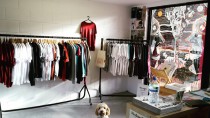
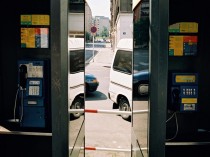
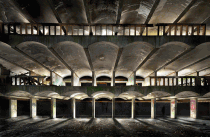









Comments